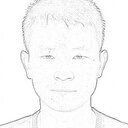In vitro analysis and mechanical properties of twin screw extruded single-layered and coextruded multilayered poly(caprolactone) scaffolds seeded with human fetal osteoblasts for bone tissue engineering.
Keywords
Abstract
In vitro culturing and mechanical properties of three types of three-dimensional poly(caprolactone) scaffolds with interconnecting open-foam networks are reported. The scaffolds targeted bone tissue regeneration and were fabricated using twin screw extrusion and coextrusion techniques, for continuous mixing/shaping and formation of single or multilayers with distinct and tailorable porosities and pore sizes. Human fetal preosteoblastic cells, hFOB, were cultured on the extruded and coextruded scaffolds under osteogenic supplements and the samples of the resulting tissue constructs were removed and characterized for cell viability and proliferation using the MTS assay, differentiation, and mineralized matrix synthesis via the alkaline phosphatase, ALP, activity and Alizarin Red staining and cell migration using confocal microscopy and scanning electron microscopy. The hFOB cells formed a confluent lining on scaffold surfaces, migrated to the interior and generated abundant extracellular matrix after 2 weeks of culturing, indicative of the promise of such scaffolds for utilization in tissue engineering. The scaffolds and tissue constructs exhibited compressive fatigue behavior that was similar to that of cancellous bone, suggesting the suitability of their use as bone graft substitutes especially for repair of critical-sized defects or nonunion fractures.


